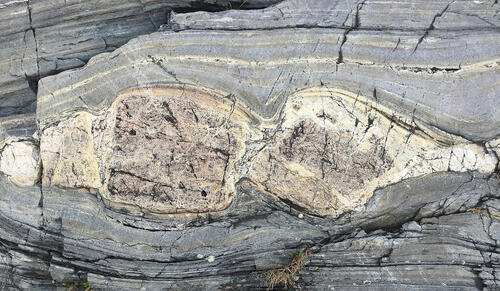
A new study introduces a novel way for tectonic plates — massive sheets of rock that jostle for position in the Earth’s crust and upper mantle — to bend and sink.
It’s a bit of planetary Pilates that may solve the longstanding mystery of “subduction,” the process by which tectonic plates plunge deep into the Earth’s interior.
Understanding the dynamics of plate tectonics has long been a top priority for earth scientists. The rise and fall of tectonic plates have ramifications for the movement of continents, the formation of mountains and volcanoes, and the continuation of the geologic carbon cycle.
“These plates are 100-kilometer-thick sheets of cold, strong rock that in principle shouldn’t be able to deform and sink at all — and yet they do,” said David Bercovici, the Frederick William Beinecke Professor of Earth & Planetary Sciences in Yale’s Faculty of Arts and Sciences and co-director of the Yale Center for Natural Carbon Capture, which is part of the Yale Planetary Solutions Project.
Writing in the journal Nature, Bercovici and a team of scientists present a new model showing what happens when tectonic plates slide deeper into the Earth’s interior. Taras Gerya, a professor of geophysics at ETH Zurich, is the study’s lead author; Thorsten Becker, a professor at the University of Texas, is co-author.
The study was motivated in part by Bercovici’s previous body of work — including a study earlier this year with former Yale researcher Elvira Mulyukova, who is now an assistant professor at Northwestern University — looking at how rock grains are altered in the lithosphere or upper mantle, Earth’s topmost rocky layer.
In the previous study, Bercovici and Mulyukova posited that the lower portion of a tectonic plate can become weaker as a result of “grain damage,” a squeezing and mixing of mineral grains over millions of years that reduces grains to smaller and smaller sizes, softening the rock.
In the new model, a tectonic plate bends due to a repeating, two-step process. The top 20 kilometers of the tectonic plate breaks slightly, creating faulting. Grain damage then weakens the lower 80 kilometers of the plate just below the fault.
“The whole plate gets weak enough to bend and sink,” Bercovici said. “But the surprise is that the ‘faulting-grain damage’ feedback happens in a repeating sequence. As the plate bends and sinks, it causes a sausage-link pattern that can be seen in the outer region of the subduction zone.”
The model closely matched observations made in Japan of a tectonic plate in which large cracks in its top section bends downward and shows signs of weaker material underneath.
The research was supported by the U.S. National Science Foundation, the Swiss National Science Foundation, and ETH Zurich.
by Jim Shelton